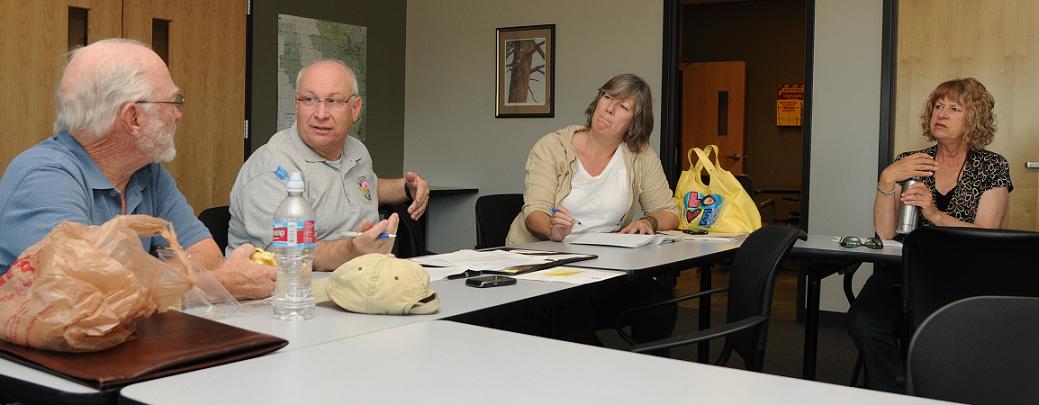The Verde River is a very visible feature in the Verde Valley, and a critical resource. It’s easy to pick out, especially this time of year, as its water feeds a ribbon of bright green that winds through the valley.
As front and center as the river is, there are numerous groups working behind the scenes to make sure this precious resource, a river that flows year-round in a desert, is protected.
While the members of these groups are often aware of one another and what they are doing, it’s not always readily apparent to the rest of the public, many who might not give the river much more than a second thought as they go about their daily lives in the Verde Valley.
Of course, many of these groups understand that while behind-the-scenes work is important, it can be absolutely critical to get the public on their side.
That’s why the Verde River Basin Partnership is working to get an outreach program up and running. The partnership formed in 2005 with a mandate to study the river and the rest of the area’s water resources. While government funding was hard to come by, the group received funding from the Walton Foundation. With some assistance from the U.S. Geological Survey, the partnership is looking at the science of groundwater, the river and its relationship with rainwater and melting snow, along with other factors.
The VRBP wants to predict as accurately as is possible the effect human impact on the area’s groundwater resources through the year 2110.
All the science can get a little technical and turn a lot of regular non-scientist people off.
That’s one of the main reasons the outreach committee was formed. The committee wants to bring its mission and information to the public-at-large, but presented in a way that will keep public interest piqued while continuing to generate awareness of just how important water is in an arid region with a growing population and finite resources.
River beds around the state that stay dry most of the year paint a picture of one possible future for the Verde River without proper management and oversight. Sustainability efforts go beyond simply preserving a riparian habitat for the area’s diverse wildlife. The group points out that the area’s water keeps everything from well water flowing to keeping irrigation ditches filled.
“When you start getting too deep in science with the public we lose the moment quickly,” said Tony Gioia, who sits on the partnership’s outreach committee.
To that end, the group is planning to set up some public displays at upcoming events throughout the Verde Valley in April. It’s a perfect opportunity for the group’s outreach efforts, especially since April is officially “Water Awareness Month.”
A visual interactive model of the area’s groundwater is planned to be on display, something committee member Edessa Carr said gives the public a more visual idea of how different conditions can affect water underground, water no one can usually see.
The group will have informational tables or booths Friday and Saturday, April 15 and 16, when the National Park Service holds presentations to discuss with the public the results of a nearly five-year study into the source of the water in Montezuma Well. The first presentation will be at 6 p.m. at the Yavapai College Verde Valley Campus, Building G, room 123, 601 Black Hills Drive in Clarkdale. The second presentation will be at 6 p.m. at the Camp Verde Unified School District Multi-Use Complex, 410 Camp Lincoln Road in Camp Verde.
The next event on the schedule is the Verde Valley Birding and Nature Festival, set to run from Thursday, April 28, through Sunday, May 1, at Dead Horse Ranch State Park in Cottonwood.
The group is also planning to set up at a “sustainability extravaganza” scheduled to take place in Clarkdale in early May.
That last event is primarily designed to promote development in the area, using the river as a selling point, said committee member Ed Wolfe. That could mean that the partnership’s presence is even more critical, Wolfe said.
“It’s promoting economic development on a river that might one day not be there,” Wolfe said. “We need to really sell the message.”
In the meantime, the committee is also considering holding an open membership drive, allowing the public to get involved with a small membership fee.
While Wolfe said any money raised through memberships won’t do much to fund lengthy scientific studies, it could go a long way toward covering the group’s day-to-day expenses. Any final decision on such memberships, however, will have to be approved by the partnership’s governing board. For more information on the partnership, visit vrbp.org.
